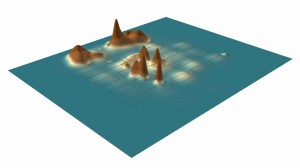The concept of dance as a ’site of knowledge’ suggests a number of questions such as what is known, how is it acquired, when is expertise recognised, etc. On this basis, it is also apparent that dance IS a site of knowledge, as evidenced by the existence of a community that has agreed to learn about it and advance this knowledge largely through the production of art-making processes and performances. But dance’s status as a form of knowledge is largely evaluated on the strength of its contribution as ‘art’ to the public sphere. This evaluation is not always useful for understanding the full nature of what dancing contains; and here is where exchanges with other non-art disciplines and practices can be productive. Another way of framing this is around the issue of status: in that the knowledge contained in dancing and dance making is not always seen to be equivalent to that of other domains. This is implied in the vision that still motivates areas of this project (and the related Motion Bank): “to position dance to take part in the expansion of knowledge in the 21st Century” (as if it has not already taken part, which one could of course argue that it has).
What is important to Synchronous Objects, and a number of other choreographer-initiated projects (also asking questions about ‘the knowledge that is dance’: see Choreographic Objects Workshops and deLahunta and Shaw 2007/ 2008), is the possibility of this dance knowledge being shareable with other knowledge domains. The idea of expertise seems critical here. In the early days of the OSU project, Forsythe and his collaborators spoke of “leading the non-dance expert in and the dance expert out” of the interactive score of the dance ONE FLAT THING, REPRODUCED. At various junctures during the projects, experts from other disciplines (architects, cognitive and neuroscientists, engineers, philosophers) have been consulted and some have developed their own research projects on the basis of the ‘resources’ that the project has made available (see the blog entry of Patrick Haggard for an example).
Synchronous Objects and these other projects are committed to making “choreographic ideas accessible to other domains” (Norah Zuniga Shaw quote in the NYT preview article dated 29 March 2009); and to the concept that “choreography can become a lens that enables us to bring whole intellectual landscapes into focus” (from communication with Alva Noe).
But this is not just abstract thinking. Firstly, an important precedent exists in Forsythe’s first interactive multimedia publication, the CD-ROM IMPROVISATION TECHNOLOGIES. The innovative visualisations and systematic organisation of the materials presents in Forsythe’s own words, “just some of the ways of thinking about analysing motion”, but it is done in such a way that it enables researchers in other fields to apply this thinking to their own areas (e.g. cognitive psychology and architecture). In a term drawn from anthropological practice, the CD-ROM provides one of the first clear “boundary objects” produced within the dance field to invigorate exchanges with other communities of practice.
What these traces and artefacts of dance and dance making make possible, through the setting of certain standards and measurements, may be akin to when maps were created before aerial views. In an essay on music visualisation, long-time Forsythe collaborator, composer and programmer Joel Ryan calls this “working without an overview” when the map had to be built up from what was known on the ground (Ryan 2003). After enough real measurements from the available information were made, the mapmaker would eventually start to infer new connections from what had been visualised on the page. Synchronous Objects, and what IMPROVISATION TECHNOLOGIES did before it, is providing clear examples of just such a map-making endeavour – models that reveal dance to be a site of shareable knowledge. These models make a new layer of information, about thinking, about moving, about space and time, explicit; and importantly someone doesn’t have to be a dancer, dance maker or even a dance spectator to find these resources stimulating and meaningful.
Scott deLahunta. Columbus, OH. 30 March 2009.
References:
Choreographic Objects Workshops (UK based) here.
deLahunta, Scott and Shaw, Norah Zuniga (2008)’Choreographic Resources Agents, Archives, Scores and Installations’, Performance Research, 13:1,131 — 133.
deLahunta, Scott and Shaw, Norah Zuniga (2007) ‘Constructing Memory: creation of the choreographic resource’, Performance Research, 11:4, 53-62.
Ryan, Joel, (2003) ‘Master Class: Music Visualization’, Making Art of Databases. V2/ Nai Publishers: Rotterdam, 62.
This text is based on an excerpt from “Talking About Scores: William Forsythe’s vision for a new form of dance ‘literature’”. By Scott deLahunta, Rebecca Groves and Norah Zuniga Shaw. in: Knowledge in Motion. Eds: Sabine Gehm, Pirkko Husemann and Katharina von Wilcke. Bielefeld: transcript. 2007. pp. 91-100.


 NORAH: Ola, let’s start with a discussion of your involvement in the project. I’ve had a long term interest in geography because of my previous work in environmental science but for many people the connection between dance and geography might seem surprising.
NORAH: Ola, let’s start with a discussion of your involvement in the project. I’ve had a long term interest in geography because of my previous work in environmental science but for many people the connection between dance and geography might seem surprising.
Recent Comments